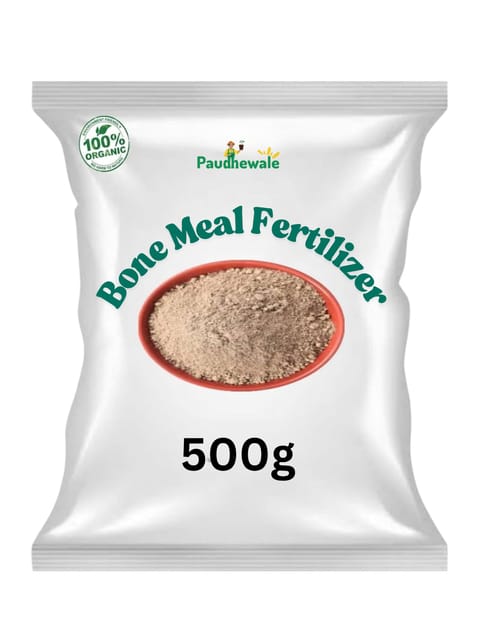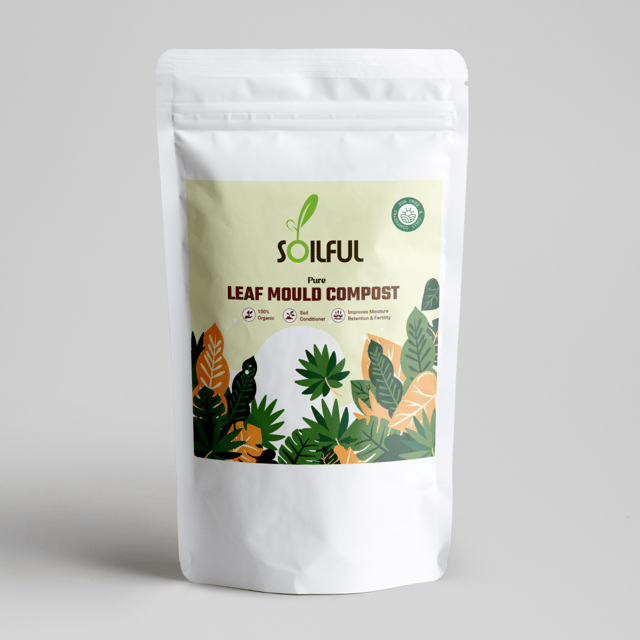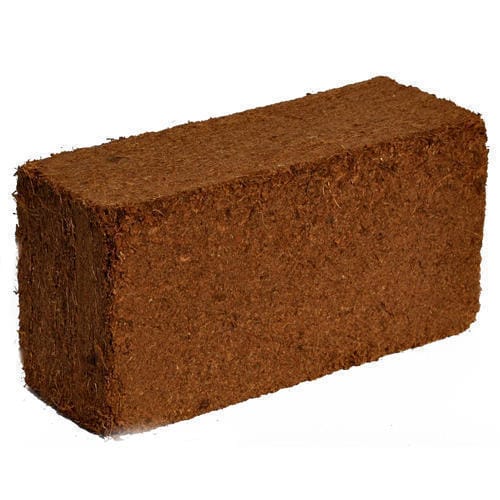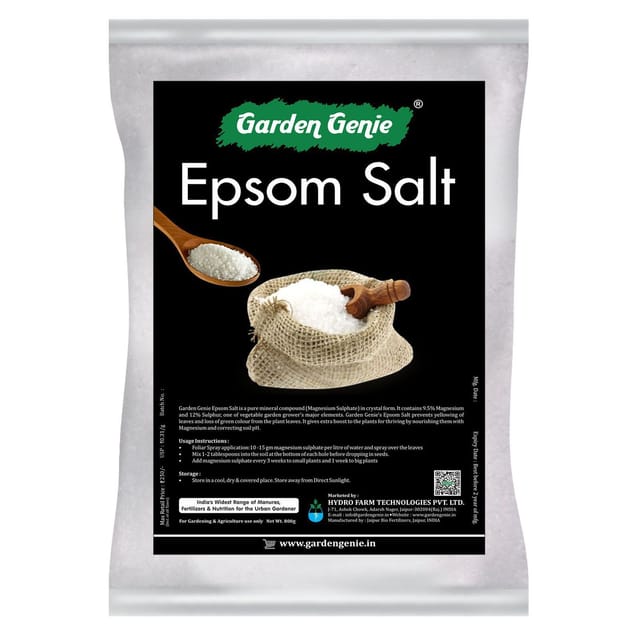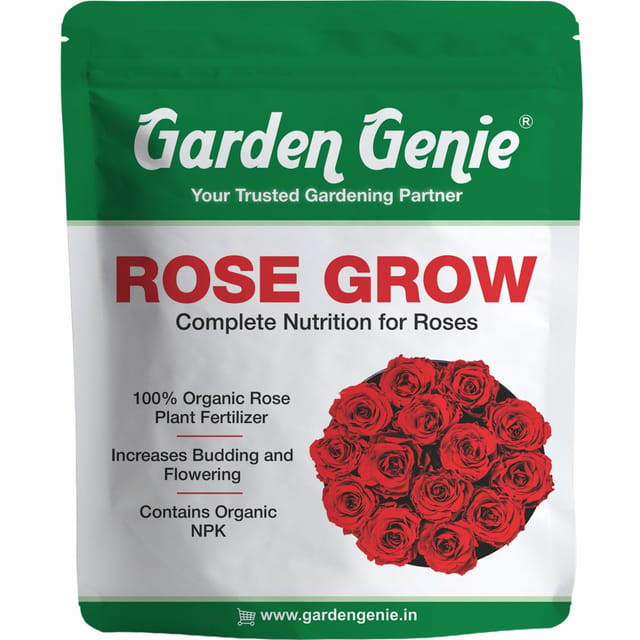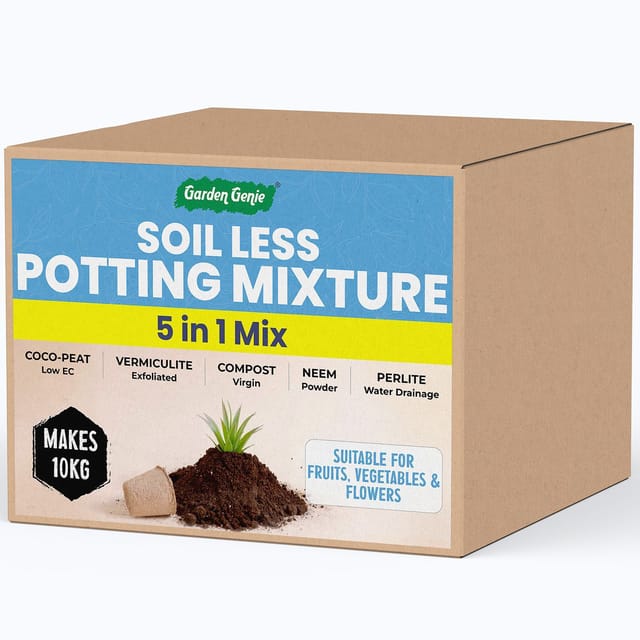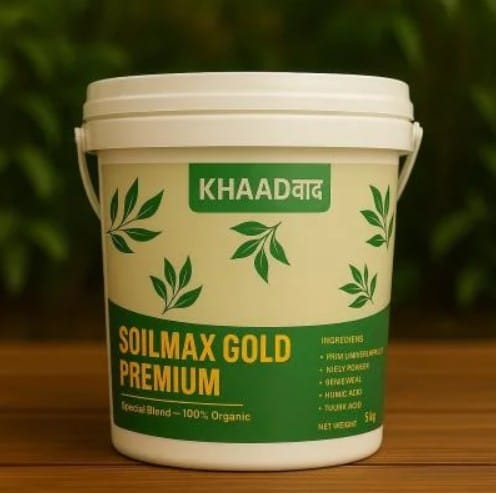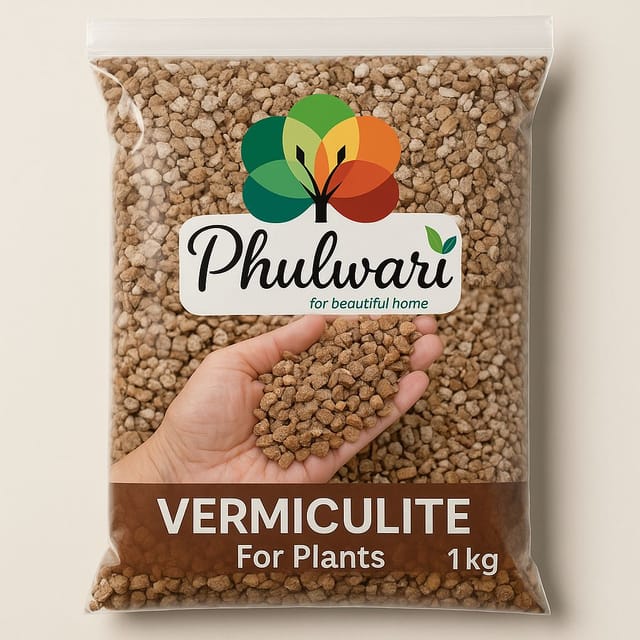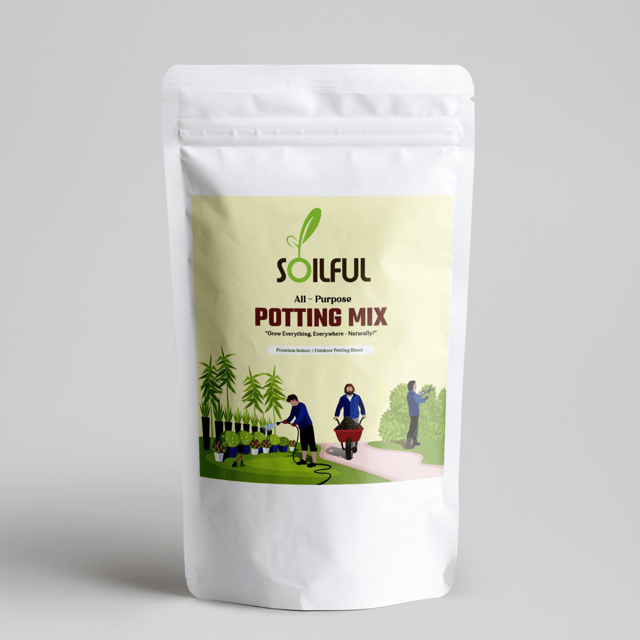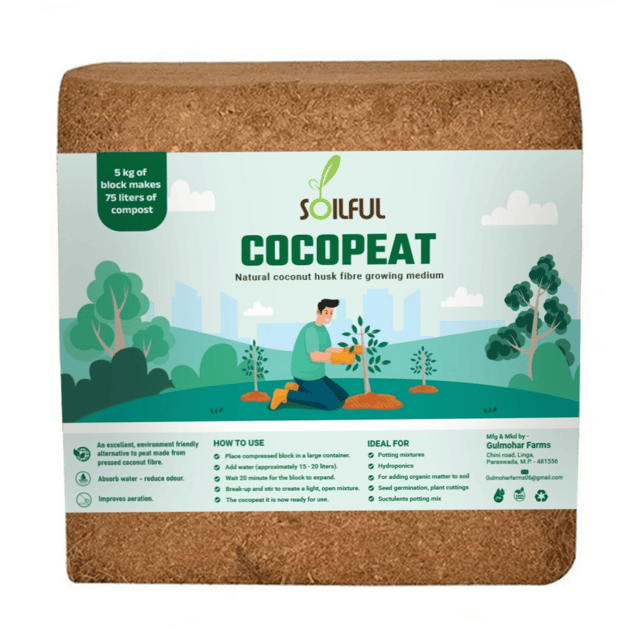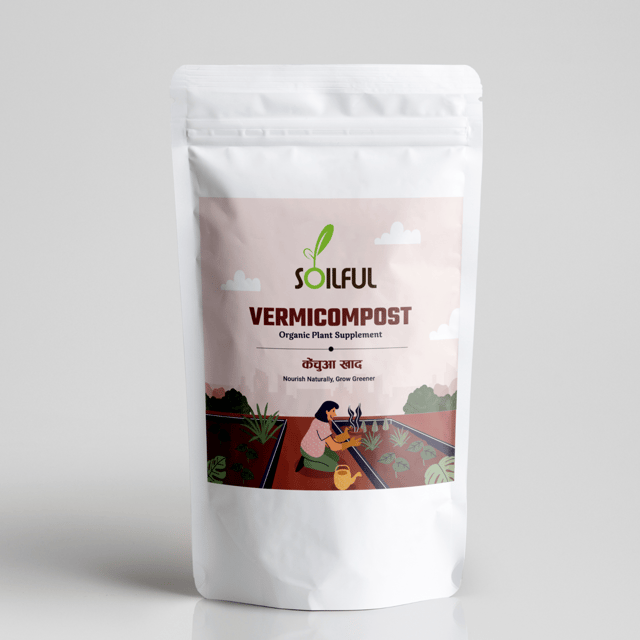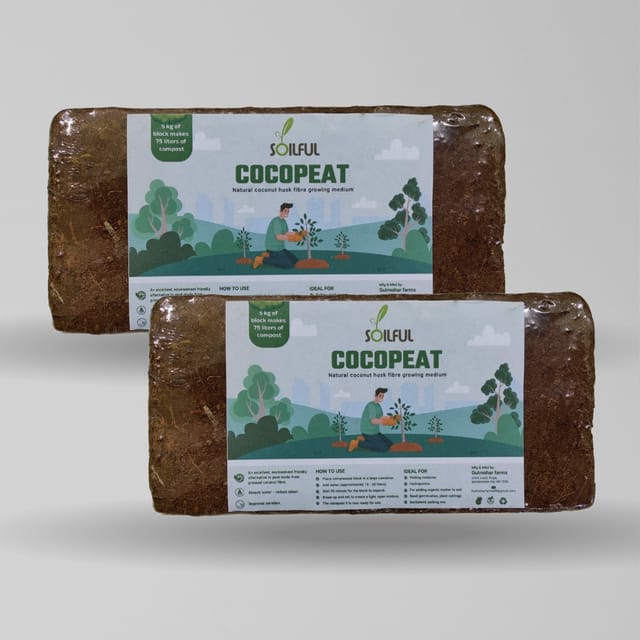- English
- हिन्दी - HI
Choose your location
Please provide your delivery pincode to see products available in your area
Soils and Fertilizers
Soils and Fertilizers: The Key to a Thriving Garden 🌿🌱
The foundation of a healthy garden begins with the right soil and fertilizers. Without them, even the best plants can struggle to grow. Whether you're a beginner or an experience...
Soils and Fertilizers: The Key to a Thriving Garden 🌿🌱
The foundation of a healthy garden begins with the right soil and fertilizers. Without them, even the best plants can struggle to grow. Whether you're a beginner or an experienced gardener, understanding the different types of soils and fertilizers, and how they work together, is crucial for ensuring your plants flourish. In this guide, we’ll explore everything you need to know about soils and fertilizers to maintain a healthy and productive garden.
What Are Soils and Fertilizers? 🌍🌱
Soil is the lifeblood of your garden. It’s the medium in which plants grow, providing them with nutrients, water, and anchorage. Soil quality directly impacts plant health, which is why choosing the right soil for your garden is essential.
Fertilizers, on the other hand, are substances that provide essential nutrients to plants. They supplement the soil’s natural nutrient content, ensuring that your plants receive all the necessary elements for optimal growth. Fertilizers come in various forms, including liquid, granular, and slow-release options.
Why Soils and Fertilizers Matter for Your Garden 🌻
1. Soil Quality Determines Plant Health 🌱
Healthy soil is rich in organic matter and microorganisms that promote strong root growth and plant development. It helps retain moisture, allows proper drainage, and supports the plant’s nutrient intake. The right soil composition can also improve disease resistance and yield production.
2. Fertilizers Enhance Growth 🌼
Even the best soil may not provide all the nutrients your plants need for optimal growth. Fertilizers help fill in the gaps by providing macronutrients like nitrogen, phosphorus, and potassium, as well as micronutrients like iron, calcium, and magnesium. By using the right fertilizers, you can improve the growth, color, and yield of your plants.
Types of Soil for Gardening 🌍
1. Clay Soil 🏞️
Clay soil has fine particles and can retain moisture well. However, it can become compacted, leading to poor drainage. While it’s nutrient-rich, it requires proper aeration and amendments like compost to improve its structure.
- Pros: Retains moisture, nutrient-rich.
- Cons: Poor drainage, can be heavy and compacted.
2. Sandy Soil 🌵
Sandy soil has larger particles that don’t hold water well, leading to fast drainage. While it’s easy to work with and doesn’t get easily compacted, it can be nutrient-poor, requiring regular fertilization.
- Pros: Well-draining, easy to work with.
- Cons: Nutrient-deficient, requires more frequent watering.
3. Loamy Soil 🌾
Loamy soil is the ideal soil type for most plants. It’s a balanced mixture of sand, clay, and organic matter, offering excellent drainage, nutrient retention, and moisture balance.
- Pros: Balanced texture, perfect for most plants, good drainage and water retention.
- Cons: Can be costly to create in certain areas.
4. Peaty Soil 🌳
Peaty soil contains high organic matter and is typically found in wetlands. It has excellent moisture retention properties but may require the addition of nutrients to support plant growth.
- Pros: Moisture-retentive, rich in organic matter.
- Cons: May require additional nutrients, can be acidic.
5. Chalky Soil 🪴
Chalky soil is alkaline in nature and contains a high amount of lime. While it’s good for certain plants like cabbage and lilacs, it can be challenging for others that prefer acidic conditions.
- Pros: Good for alkaline-loving plants.
- Cons: Can be too alkaline for other plants.
Types of Fertilizers for Your Garden 🌸
1. Organic Fertilizers 🌿
Organic fertilizers are derived from natural sources like compost, manure, and bone meal. They improve soil structure, enhance microbial activity, and provide a slow release of nutrients. Organic fertilizers are ideal for eco-conscious gardeners.
- Pros: Natural, improves soil health, slow nutrient release.
- Cons: Requires more time to take effect, may have a less predictable nutrient content.
2. Chemical Fertilizers 💧
Chemical fertilizers are manufactured to deliver specific nutrients to plants quickly. They contain synthetic forms of macronutrients like nitrogen, phosphorus, and potassium. Chemical fertilizers are effective for quick results but can lead to nutrient imbalances or long-term soil degradation if overused.
- Pros: Fast-acting, easy to use, targeted nutrient application.
- Cons: Can degrade soil health over time, may harm beneficial organisms.
3. Slow-Release Fertilizers 🌾
Slow-release fertilizers are formulated to release nutrients gradually over time. They reduce the risk of nutrient leaching, making them ideal for plants that need a steady supply of nutrients throughout the growing season.
- Pros: Provides consistent nutrition, reduces the need for frequent application.
- Cons: Expensive, slower results compared to quick-release fertilizers.
4. Liquid Fertilizers 🌱
Liquid fertilizers are dissolved in water and applied directly to the plant’s roots or leaves. They are absorbed quickly and are ideal for plants that need immediate nutrient supplementation. They are commonly used for container gardens, hydroponics, and foliar feeding.
- Pros: Fast-acting, easy to apply.
- Cons: Needs frequent application, can be more expensive.
5. Granular Fertilizers 🌾
Granular fertilizers are solid and often applied to the soil surface or mixed into the soil. They can be organic or chemical and release nutrients slowly over time. Granular fertilizers are ideal for lawns, flower beds, and vegetable gardens.
- Pros: Long-lasting, easy to apply, steady nutrient release.
- Cons: Can be slow to take effect, may need to be watered in for better absorption.
How to Choose the Right Soil and Fertilizer for Your Garden 🌻
1. Understand Your Soil Type 🌿
Start by identifying your soil type (clay, sand, loam, etc.). Each type has its own benefits and challenges. For example, if you have heavy clay soil, you may need to add compost to improve its texture. If your soil is sandy, you’ll want to add organic matter to help it retain moisture and nutrients.
2. Select the Right Fertilizer 🌿
Choose a fertilizer that suits your plants’ needs. For example, leafy greens may benefit from a nitrogen-rich fertilizer, while flowering plants or fruit-bearing plants may need more phosphorus and potassium.
3. Test Your Soil 🔬
Before applying fertilizers, consider testing your soil to determine its pH and nutrient levels. This will help you choose the right fertilizer and avoid nutrient imbalances.
Why Buy Soils and Fertilizers from Paudhewale.com? 🌱
At Paudhewale.com, we offer a wide selection of high-quality soils and fertilizers to ensure that your garden thrives. Here’s why you should choose us for your gardening needs:
- Top-Quality Products: We offer premium soils, composts, and fertilizers from trusted brands.
- Wide Range: Whether you need organic fertilizers, liquid feeds, or slow-release granules, we have something for every plant and soil type.
- Expert Advice: Need guidance on which fertilizers to use? Our team is here to help you choose the best products for your garden.
- Affordable Pricing: We provide competitive prices to make gardening accessible for everyone.

